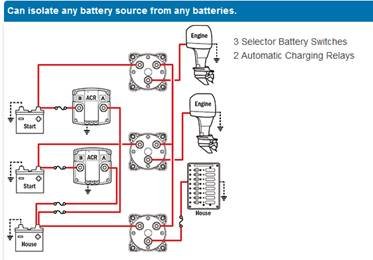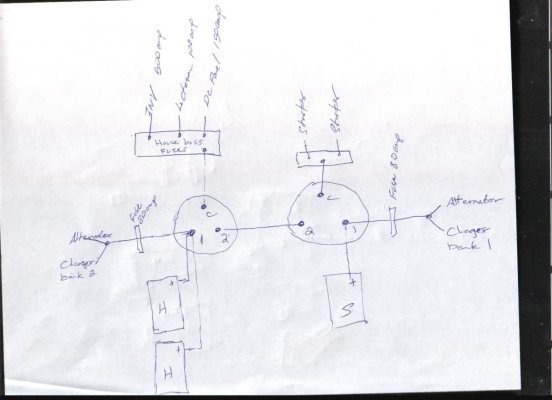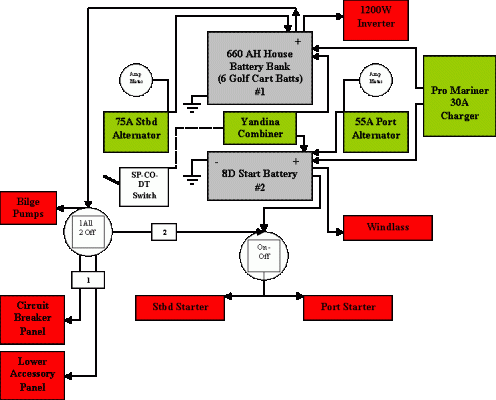sdowney717
Guru
- Joined
- Jan 26, 2016
- Messages
- 2,264
- Location
- United States
- Vessel Name
- Old Glory
- Vessel Make
- 1970 Egg Harbor 37 extended salon model
My situation.
I have 2 engines, so 2 alternators.
I have 3 batteries, one battery is for starting both engines. 2 batteries for house loads.
I have two 3 way switches, so can combine all 3 or isolate all 3 batteries.
Problem is this.
Anchor out for hours. No problem starting engines.
But the house batteries are low, so the starboard engine alternator gets a hefty load like 60 amps to charge depleted house batteries while port engine alternator is loafing charging fully charged starter battery.
It works but sometimes I will manually combine the banks together so each alternator shares the load. Of course I may forget to switch it back.
Can an ACR be used to join together my starting and house bank?
Can the ACR sense which engine is running or does it only sense one engine running?
I found a 2 source 4 output battery combiner that will do that, but the price is high.
zero volt drop marine battery isolator
I have 2 engines, so 2 alternators.
I have 3 batteries, one battery is for starting both engines. 2 batteries for house loads.
I have two 3 way switches, so can combine all 3 or isolate all 3 batteries.
Problem is this.
Anchor out for hours. No problem starting engines.
But the house batteries are low, so the starboard engine alternator gets a hefty load like 60 amps to charge depleted house batteries while port engine alternator is loafing charging fully charged starter battery.
It works but sometimes I will manually combine the banks together so each alternator shares the load. Of course I may forget to switch it back.
Can an ACR be used to join together my starting and house bank?
Can the ACR sense which engine is running or does it only sense one engine running?
I found a 2 source 4 output battery combiner that will do that, but the price is high.
zero volt drop marine battery isolator




